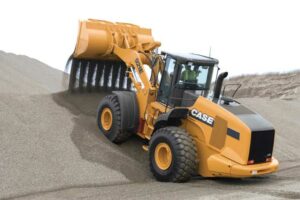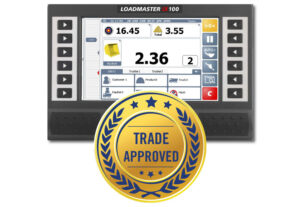New technology that aims to maximise operational results has always been highly adopted across industries dealing with bulk material processing, holding a known ability to yield enticing results. It’s rare to discover such a simple yet vital piece of technology that can work to underpin day-to-day operations so, when such a product surfaces, it’s guaranteed to create a lasting impact.
Loader weighing scales have become a favoured investment across industries where ascertaining product weight is an essential consideration in risk prevention, process optimisation, and commercial transacting. This small device holds an exceptional reputation amongst consumers with an ability to significantly streamline business operations, presenting itself as an indispensable asset across a broad range of applications.
So, whether involved in construction work, quarrying, landscaping, or even waste management, loader scales are likely to completely optimise organisational services, providing access to precise weight readings, enhanced inventory management, and risk reduction.
Despite clear benefits associated with loader scale technology, many operators and local businesses are yet to invest, with an unclear vision of what these systems truly offer. Though not all benefits are completely tangible, loader scale products provide immense value and a cost-effective medium to maximise return-on-investment. So, where is this ‘value’ derived from?

The utility and value of loader weighing scales is typically underestimated despite playing a pivotal role throughout a diverse range of industries. While often perceived as a simple piece of technology, scale systems provide a functional solution to critical considerations surrounding bulk haulage services. It can often be difficult to quantify intangible benefits associated with products similar to loader scales, so, here is where the true ‘value’ can be found.
While most companies that work with processed or pre-packaged material have little trouble when auditing inventory levels, products that don’t conform to typical specifications can struggle with costly material management processes and complicated inventory control. When dealing with bulk material such as rocks, fill, or alternative construction material, weight tends to be the core determinant in regards to sales quantity. Utilising loader scales essentially optimises certain processes, preventing delivery variances which can lead to contractual disputes or affect your bottom line. In tandem, material accuracy can also assist in more efficient inventory management and transactional transparency.
An evident feature of the loader scales is the ability to enhance process efficiency, reducing downtime and promoting higher profit margins. The use of this technology essentially eliminates a traditional loading step, measuring material weight in real-time with every bucket lift, making standalone and randomised weigh-in processes obsolete. While this alone promotes more efficient operations, loader weighing scales also help digitalise material conveying with recorded weight data that can be later used to construct monthly stockpile reports or even transact from with the best trade approved loader scale system.
One of the final value-added features comes in terms of data accuracy which is often overlooked given its virtual nature. The issue of both over and under-loading a front end loader is not atypical but it can occur more frequently than anticipated. Not only can such problems exhaust inventory levels or damage customer relations but, without accurate readings highway regulations can also be voided in reference to Australia’s Chain of Responsibility Laws. Precise material data not only promotes performance but can also prevent potential misconduct.
To better understand the benefits associated with front loader scales, it is essential to understand how they operate and the technology driving this simple, yet effective product. These systems essentially work by turning the weighing process into a one-step operation.
Loader measurement scales utilise a series of sensors and other componentry in tandem with a user-friendly display to accurately and consistently measure unique payloads. Leading systems will often rely on up to five parts to precisely measure material – offering unmatched results. Such parts may include:
 Loader scales as a tool of transport responsibility
Loader scales as a tool of transport responsibilityLoader weighing scales were initially designed to calculate essential loading data, enhancing the overall transparency and accuracy of core business operations. While scale systems still exist to fulfil this purpose, modern transport responsibilities have also paved the way to a new set of considerations that must be amended.
When dealing with bulk haulage and the transportation of material, organisations are responsible for the safe loading of goods in correspondence to Chain of Responsibility Laws. Overloading as a result of inaccurate weighing processes can incur significant financial penalties, making loader scales even more of an asset. These laws essentially aim to ensure that legal liability is imposed on all stakeholders within the transport chain, holding operators and businesses legally liable for breaches of loading laws.
So, while loader scales provide an enticing return-on-investment through increased weighing precision and enhanced process efficiency, they are also a valuable tool when dealing with commitments to transport responsibility. In general, those looking to reap both short and long-term benefits will likely look to utilise scale technology to achieve optimised results. Systems such as RDS Technology’s Loadmaster will typically offer cost-effective access to loader scale systems, meaning they often pay themselves off within a short period of time.

We source, deploy and support intelligent positioning solutions to enhance our customers’ productivity.
Aptella Pty Ltd
ABN 56 130 367 065
2024 Aptella Pty Ltd | ABN 56 130 367 065 | Terms and Conditions | Privacy Policy